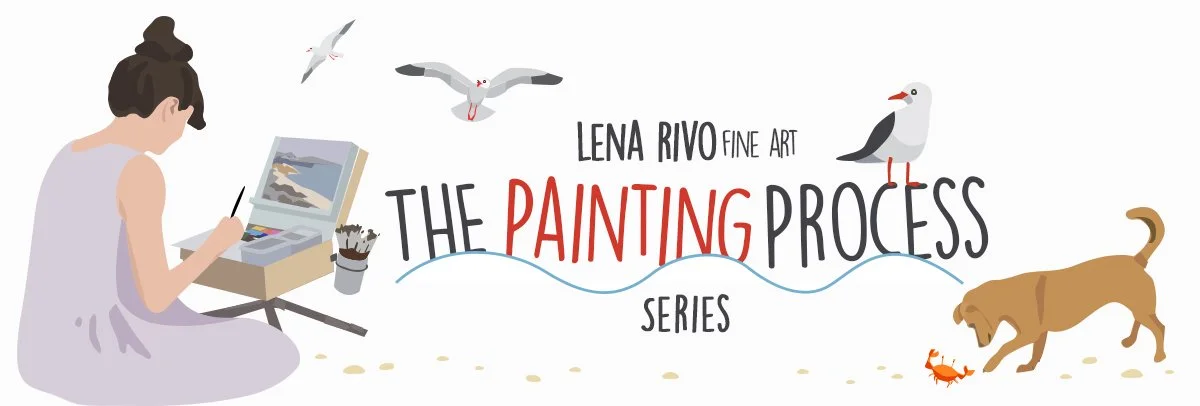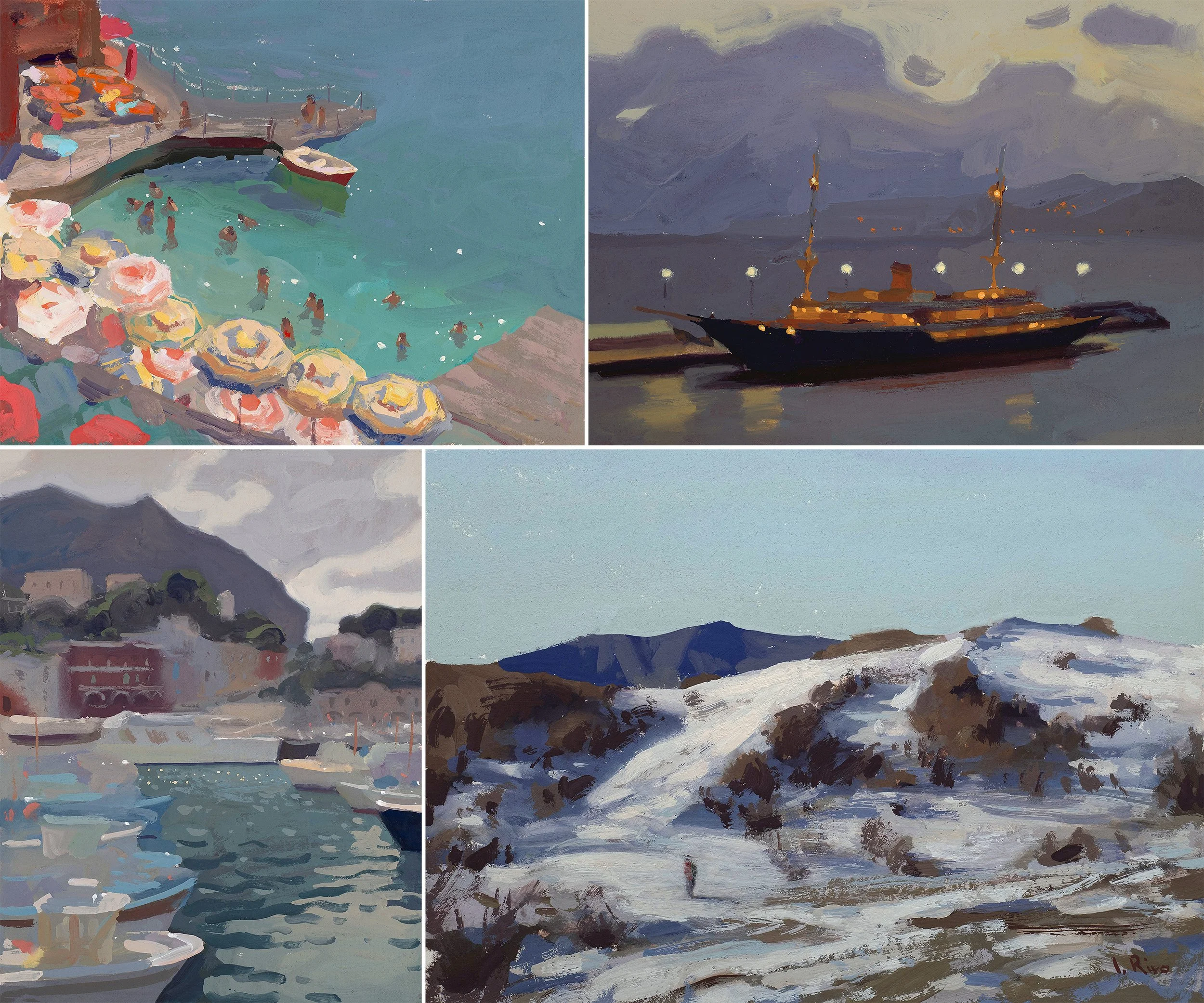The Painting Process - Issue Nº 13
In this series, I share the stories behind my paintings, my thought process, and the discoveries I make along the way.
※※※※
WHAT’S YOUR FAVORITE MEDIUM?
This is a question I’m asked often — probably because I like switching between different painting materials. In this article, I’d like to share why I’ve never been able to give a simple answer.
When we talk about painting mediums, we’re essentially talking about pigment suspended in different binders. The same pigments are used in gouache, watercolor, oil, acrylic, soft pastels, and oil pastels. What makes each of these mediums different is the binder, not the color itself. No matter what medium we use, we are always working with shapes of color and tonal values, manipulating the four aspects of color: value, hue, saturation, and temperature.
The binder affects the finish and texture of a painting, but it’s our understanding of the fundamentals — not the medium — that determines how strong or expressive the work is. A medium can help you express an idea more clearly, but it can’t make the painting more successful by itself. It’s your use of color, shape, and edge that brings a painting to life.
That said, some mediums are easier to handle than others. For example, oil dries slowly and requires more time and care, while gouache and acrylic dry quickly and allow for faster layering. Oil pastels are easier to manage than soft pastels because they’re less fragile and allow for effortless layering. But no matter which one you choose, the real “medium” we all use is color — and that’s what we use to tell our stories.
Each medium brings its own texture, finish, and feeling, however. That’s why I switch between them depending on what I want to express.
For small and medium-scale illustrative work or plein air painting, I use gouache.
For large-scale paintings — and occasionally for plein air — I use oil paint.
For medium-sized studio paintings, I often choose oil pastel.
Every painting medium changes our experience of color. Even the surface we work on affects how we paint. It’s no surprise then, that each material leads us to express different aspects of what we see or feel. One of my favorite quotes from Harold Speed’s book The Practice and Science of Drawing says it best:
“The materials in which the artist works are of the greatest importance in determining what qualities in the infinite complexity of nature he selects for expression. And the good draughtsman will find out the particular ones that belong to whatever medium he selects for his drawing, and be careful never to attempt more than it is capable of doing. Every material he works with possesses certain vital qualities peculiar to itself, and it is his business to find out what these are and use them to the advantage of his drawing.”
This is exactly why I don’t have a single favorite medium — each one I use adds something unique to my painting practice. Depending on the subject, mood, or feeling I want to express, a different medium may speak more clearly. Therefore, exploring several mediums broadens your expressive possibilities.
While I sometimes paint with acrylics and soft pastel, the three mediums I return to most often are gouache, oil and oil pastel.
GOUACHE
My favorite medium for plein air painting. It dries quickly, allowing for fast layering, and doesn’t require special carriers for wet panels. It’s a versatile and playful medium — light to carry, easy to set up, and always enjoyable to use. Plein air painting limits the size of my surface, whether it’s paper or canvas, because capturing quickly changing natural conditions requires rapidly blocking in the main colors of the composition. Gouache is perfect for creating small-scale works under these conditions.
OIL
Оil is my choice for large-scale work and occasionally for plein air painting. It allows for a wide range of textures, from thin, translucent washes to thick impasto. I also appreciate how easily I can create soft and lost edges with oil paints.
OIL PASTELS
Oil pastels feel almost like oil paint, but without the need for brushes, mediums, or solvents. They have become my favorite medium for creating medium-scale studio paintings that convey a sense of movement and atmosphere. They’re also perfect for quickly working out ideas, as they allow for infinite layering and easy corrections. There’s no friction between idea and action — I sit down at my desk, pick up a pastel stick, and begin to paint. It feels like play, yet I still rely on the same principles I use with gouache or oil. The results often surprise me, as they carry the same qualities as my paintings in other media.
After all, painting is about the artist’s experience. Every medium shapes the way we experience color. Texture, surface, handling — even the feel of paper vs. canvas — affect our connection to the work. Drawing with a stick of charcoal feels very different from drawing with a pencil. Painting with a brush is not the same as painting with your fingers or a pastel stick.
It’s that variety that keeps painting exciting for me. I love all of these mediums, and I’m sure there are many more I have yet to explore. I’ve recently started using soft pastels for figurative work, so they may soon become one of my favorite mediums as well.
We’re fortunate to live in a time with so many materials available to artists — why limit ourselves to just one?
People often ask me which medium sells best. I realized long ago that paintings created with joy, curiosity, and excitement always sell more quickly than those made solely to sell. I don’t draw or paint because I ‘have to’ — I always follow my interest and excitement. That’s where the most rewarding discoveries occur. I explore this topic further here: The Painting Process #10
I hope this article inspires you to explore and experiment, to pick up a new medium, and let it surprise you!
Happy Painting!
Lena





